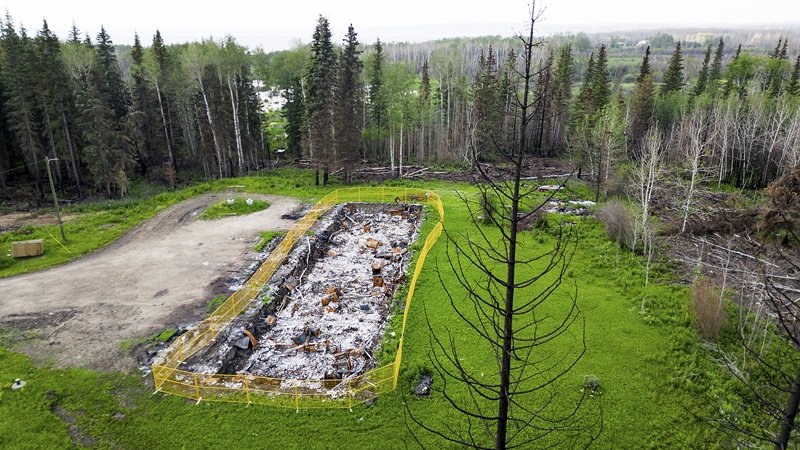Intact’s approach to help Canadians manage wildfire risk

Intact Financial Corporation (IFC) has contracted with an American wildfire risk management company to provide policyholders in Alberta and British Columbia with wildfire loss prevention and suppression services for their homes when threatened by active wildfires.
In preparation for the 2024 wildfire season in Canada, IFC has engaged with Montana-based Wildfire Defense Systems (WDS) to launch the pilot project at no additional cost for eligible Intact Insurance, belairdirect and Intact Prestige personal property customers, IFC says in a press release Tuesday.
As part of the pilot, WDS will be deploying loss prevention and suppression services, effective immediately, Luisa Currie, IFC’s senior vice president of the Western region, tells Canadian Underwriter. Services for customers whose property is threatened by a wildfire fewer than five kilometres away may include, but are not limited to:
Removing materials from around the property that may fuel a fire, including firewood, propane tanks, furniture, and grass clippings.
Covering exterior vents and closing exterior doors, windows and garage doors to prevent embers from entering the home and igniting the interior.
Setting up temporary sprinkler systems to increase humidity and lower temperatures.
Currie says WDS are “experienced, world-class leaders” in wildfire prevention and suppression, who will be deploying teams to sites to prevent wildfire spread. Montana borders B.C. and Alberta, and WDS is able to monitor wildfire spread and winds, to deploy teams from the U.S. to areas under evacuation for a wildfire in B.C. and Alberta. “They’re able to deploy very quickly,” Currie says.
WDS claims to be the largest provider of wildfire loss intervention services to insured properties in North America, with clients limited to insurance companies. It has been servicing policyholders for 16 years, and has responded to more than 1,300 fires across its 22-state service area. “That means they’ve addressed 37,000 homes and have had a success rate of 99% in preventing a total loss,” Currie says.
Preventing total losses
“It’s very important for us to help look after our customers and to try to prevent those total losses that are devastating fires,” says Currie, who has been on the frontlines of the Fort McMurray, Slave Lake and Kelowna fires. “And I have witnessed the devastation that people go through, the heartache.”
Intact calls the project a first-of-its-kind residential service in Canada to help reduce risk and damage to homes caused by wildfire.
Once the threat of wildfire is gone, WDS will attempt to return to the property to check that there is no continuing threat, place items back that may have been moved away from structures, and remove any temporary sprinkler systems or coverings, Intact adds in the release.
WDS is supplemental to all other public wildfire responders and works with local authorities in the threatened area to safely access insured properties. While best efforts will be made, “wildfires are unpredictable and WDS cannot guarantee that homes will be serviced or that their actions can fully prevent homes from being damaged by wildfire,” the release notes.
2023 was a record fire season, with more than 18 million hectares burned and 230,000 evacuees. And with continuing droughts in Western Canada, Currie says there are concerns about how active the 2024 wildfire season will be.
The good news is that 2023 is probably an outlier statistically, Richard Carr, fire research analyst with the Canadian Forest Service (part of Natural Resources Canada), said during the Institute of Catastrophic Loss Reduction’s 2024 Canadian wildfire season forecast webinar Tuesday.
“We had such a huge area burned that you probably don’t expect to see another year quite like that,” Carr says. “And we do have another set of climate conditions heading into 2024, so it’s bound to produce a somewhat different result.”
Models indicate a warm summer and uncertain rainfall amounts (but a possible slight boost from La Niña; maybe not enough to reduce drought or offset warm temperatures), Carr says. “With the uncertainty in rainfall predictions, maybe a quieter July but active again in the late summer.”
Feature image: Yellow fencing surrounds a fourplex destroyed by a May wildfire at Sturgeon Lake Cree First Nation north of Edmonton, Alberta, on Tuesday, July 3, 2023. The building housed four of the tribe’s elders. (AP Photo/Noah Berger)







